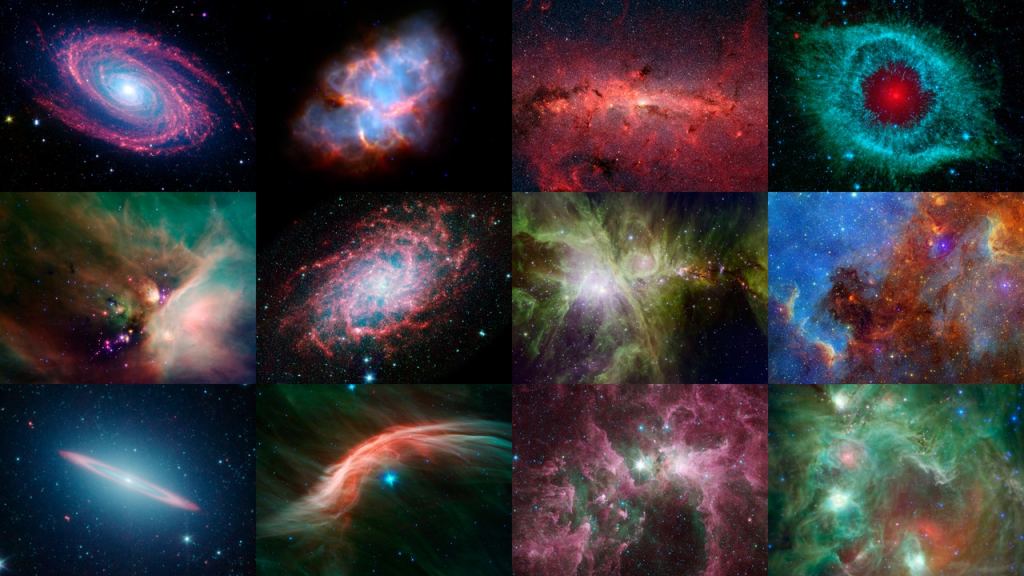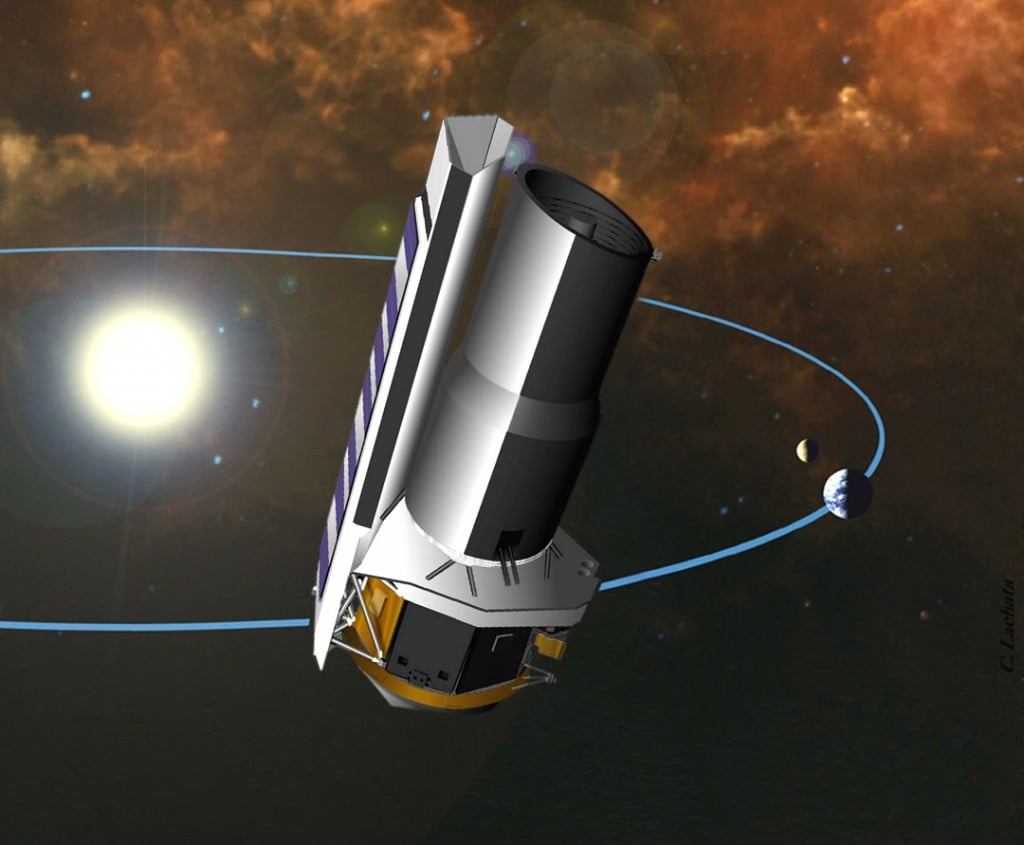NASA's Spitzer Space Telescope served the astronomy community well for 16 years. From its launch in 2003 to the end of its operations in January 2020, its infrared observations fuelled scientific discoveries too numerous to list.
Infrared telescopes need to be kept cool to operate, and eventually, it ran out of coolant. But that wasn't the end of the mission; it kept operating in 'warm' mode, where observations were limited. Its mission only ended when it drifted too far away from Earth to communicate effectively.
Now the US Space Force thinks they can reboot the telescope.
The Spitzer was one of four powerful space-based observatories in NASA's Great Observatories program. The other three are the Hubble, the Chandra X-ray Observatory, and the Compton Gamma Ray Observatory. Together, they covered gamma rays, x-rays, visible light, ultraviolet light, and infrared. (Radio waves are easily observed from Earth.) The Compton was de-orbited in 2000, and the Hubble and the Chandra are still operating.
While the JWST is a much more powerful infrared instrument than the Spitzer, its observing time is in extremely high demand. Also, not all observations require such extreme power. The Spitzer could still perform scientifically valuable observations if it were operating.
But now the Spitzer Space Telescope could be brought back to life. The US Space Force has given Rhea Space Activity an STTR (Small Business Technology Transfer) worth $250,000 to develop the Spitzer Resurrector Mission (SRM.) The SRM would travel to Spitzer's location, service it, and restore it to observational operations.
"This would be the most complex robotic mission ever performed by humanity."Shawn Usman, Astrophysicist and CEO of Rhea Space Activity
The Spitzer follows an unusual Earth-trailing, heliocentric orbit, rather than a geocentric orbit like the Hubble. Over time, the Spitzer drifted, and in 2016, it had to be reoriented and pitched over at an extreme angle in order to communicate with Earth. But that meant that the solar panels were not fully illuminated, further limiting operations. Finally, on January 30th, 2020, NASA sent a shutdown signal to the telescope and pronounced the mission over.
The telescope orbits the Sun at a distance of one AU and is now on the other side of the Sun, about two AU away from Earth.
So the Spitzer is sitting out there with its equipment intact, but out of coolant and struggling to gather enough solar power to do anything. But it's in safe mode, not dead. The SRM mission would rectify this.
The SRM is a telerobotics mission, and it would travel about 300 million km (186 million miles) and rendezvous with Spitzer. "Spitzer Resurrector is designed to restart Spitzer, confirm that it has been restored to its original performance capabilities, and then remain nearby to act as a high-rate data relay to Earth, thus restoring Spitzer to its full efficiency," Rhea Space Activity said in a press release.
If successful, this would be a remarkable achievement. The ability to service spacecraft in this way would be another significant leap in capabilities for space-based astronomy.
Before the mission was shut down, Spitzer observing time was in high demand among astronomers. Once back in operation, the telescope would no doubt be busy with astronomical observations again. But Spitzer's role would also be to find and characterize Near-Earth Objects, something that the telescope helped pioneer with its infrared capabilities.
The effort to revitalize Spitzer is part of In-space Service Assembly and Manufacturing (ISAM,) and the techniques employed by the SRM are being explored by the Department of the Air Force (DAF) and United States Space Force (USSF). So the SRM would also serve as a technology demonstration for those techniques.
"The ISAM implications of resurrecting Spitzer are jaw-dropping," said Shawn Usman, Astrophysicist and CEO of Rhea Space Activity. "This would be the most complex robotic mission ever performed by humanity. As a teenager in the 1990s, I watched U.S. astronauts repair the first Great Observatory, the Hubble Space Telescope (HST), and now Rhea Space Activity has been given the opportunity to telerobotically extend the life of the last Great Observatory, the Spitzer Space Telescope. I am humbled to have Dr. Giovanni Fazio, the Principal Investigator of Spitzer's Infrared Array Camera (IRAC), as a Co-Investigator on this ambitious mission."
Spitzer's IRAC instrument was a prolific piece of equipment, and its data led to thousands of scientific papers. While this mission will restore Spitzer to operations, it won't actually dock with the telescope, so it won't be able to add coolant. The telescope will still be restricted to warm mode, so IRAC will be operating in only its two shorter wavelength bands, not the full spectrum of four bands that it's capable of.
The US Space Force has given Rhea Space Activity a Phase 1 STTR, and RSA is pursuing a Phase 2 STTR. There's still a lot of work to do before the Spitzer can be operational again, and neither RSA nor Space Force has given a timeline for when the mission might take place.
 Universe Today
Universe Today


